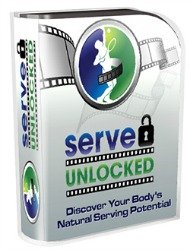|
National Tennis Rating Program (NTRP): Know How To Rate Yourself
Some Guidelines To FollowThe tennis rating categories are generalizations about skill levels. You may find that you actually play above or below the category that best describes your skill level, depending on your competitive ability. The category you choose is not meant to be permanent, but may be adjusted as your skills change or as your match play demonstrates the need for re-rating.Players must rate themselves in accordance with the NTRP. When players are rating themselves and they question at which level they should play, they should place themselves in the higher level of play. It is important that you are honest in evaluating your level of ability. Players who are good athletes and/or intend to spend a great deal of time taking lessons and practicing should be aware that their improvement may be significant enough to surpass their original self-rated level. Players should aspire to improve their skills by playing against opponents who have similar or better skills than they have and not focus on beating other less skilled players. How To Place YourselfBegin with 1.5. Read all categories carefully and then decide which one best describes your present ability level. Be certain that you qualify on all points of all preceding levels as well as those in the level you choose.When rating yourself, assume you are playing against a player of the same gender and the same ability.

Various Levels And Characteristics1.5 This player has limited experience and is still working primarily on getting the ball into play. 2.0 PLAYING STYLE: This player needs on-court experience. This player has obvious stroke weaknesses but is familiar with basic positions for singles and doubles play. FOREHAND: Incomplete swing; lacks directional intent BACKHAND: Avoids backhands; erratic contact; grip problems; incomplete swing SERVE/RETURN OF SERVE: Incomplete service motion; double faults common; toss is inconsistent; return of serve erratic VOLLEY: Reluctant to play net; avoids BH; lacks footwork
2.5 PLAYING STYLE: This player is learning to judge where the ball is going although court coverage is weak. Can sustain a short rally of slow pace with other players of the same ability. FOREHAND: Form developing; prepared for moderately paced shots BACKHAND: Grip and preparation problems; often chooses to hit FH instead of BH SERVE/RETURN OF SERVE: Attempting a full swing; can get the ball in play at slow pace; inconsistent toss; can return slow paced serve VOLLEY: Uncomfortable at net especially on the BH side; frequently uses FH racket face on BH volleys SPECIAL SHOTS: Can lob intentionally but with little control; can make contact on overheads
3.0 PLAYING STYLE: This player is fairly consistent when hitting medium paced shots, but is not comfortable with all strokes and lacks execution when trying for directional control, depth, or power. Most common doubles formation is one-up, one-back. FOREHAND: Fairly consistent with some directional intent; lacks depth control BACKHAND: Frequently prepared; starting to hit with fair consistency on moderate shots SERVE/RETURN OF SERVE: Developing rhythm; little consistency when trying for power; second serve is often considerably slower than first serve; can return serve with fair consistency VOLLEY: Consistent FH volley; inconsistent BH volley, has trouble with low and wide shots SPECIAL SHOTS: Can lob consistently on moderate shots
3.5 PLAYING STYLE: This player has achieved improved stroke dependability with directional control on moderate shots, but still lacks depth and variety. This player exhibits more aggressive net play, has improved court coverage, and is developing teamwork in doubles. FOREHAND: Good consistency and variety on moderate shots; good directional control; developing spin BACKHAND: Hitting with directional control on moderate shots; has difficulty on high or hard shots; returns difficult shot defensively SERVE/RETURN OF SERVE: Starting to serve with control and some power; developing spin; can return serve consistently with directional control on moderate shots VOLLEY: More aggressive net play; some ability to cover side shots; uses proper footwork; can direct FH volleys; controls BH volley but with little offense; difficulty in putting volleys away SPECIAL SHOTS: Consistent overhead on shots within reach; developing approach shots, drop shots; and half volleys; can place the return of most second serves
4.0 PLAYING STYLE: This player has dependable strokes, including directional control and depth on both forehand and backhand sides on moderate shots, plus the ability to use lobs, overheads, approach shots and volleys with some success. This player occasionally forces errors when serving. Rallies may be lost due to impatience. Teamwork in doubles is evident. FOREHAND: Dependable; hits with depth and control on moderate shots; may try to hit too good a placement on a difficult shot BACKHAND: Player can direct the ball with consistency and depth on moderate shots; developing spin SERVE/RETURN OF SERVE: Places both first and second serves; frequent power on first serve; uses spin; dependable return of serve; can return with depth in singles and mix returns in doubles VOLLEY: Depth and control on FH volley; can direct BH volleys but usually lacks depth; developing wide and low volleys on both sides of the body SPECIAL SHOTS: Can put away easy overheads; can poach in doubles; follows aggressive shots to the net; beginning to finish point off; can hit to opponent's weaknesses; able to lob defensively on setups; dependable return of serve 4.5 PLAYING STYLE: This player has begun to master the use of power and spins and is beginning to handle pace, has sound footwork, can control depth of shots, and is beginning to vary game plan according to opponents. This player can hit first serves with power and accuracy and place the second serve. This player tends to over hit on difficult shots. Aggressive net play is common in doubles. FOREHAND: Very dependable; uses speed and spin effectively; controls depth well; tends to overhit on difficult shots; offensive on moderate shots BACKHAND: Can control direction and depth but may break down under pressure; can hit power on moderate shots SERVE/RETURN OF SERVE: Aggressive serving with limited double faults; uses power and spin; developing offense; on second serve frequently hits with good depth and placement; frequently hits aggressive service returns; can take pace off with moderate success in doubles VOLLEY: Can handle a mixed sequence of volleys; good footwork; has depth and directional control on BH; developing touch; most common error is still overhitting SPECIAL SHOTS: Approach shots hit with good depth and control; can consistently hit volleys and overheads to end the point; frequently hits aggressive service returns 5.0 PLAYING STYLE: This player has good shot anticipation and frequently has an outstanding shot or attribute around which a game may be structured. This player can regularly hit winners or force errors off of short balls and can put away volleys, can successfully execute lobs, drop shots, half volleys, overhead smashes, and has good depth and spin on most 2nd serves. FOREHAND: Strong shot with control, depth, and spin; uses FH to set up offensive situations; has developed good touch; consistent on passing shots BACKHAND: Can use BH as an aggressive shot with good consistency; has good direction and depth on most shots; varies spin SERVE/RETURN OF SERVE: Serve is placed effectively with the intent of hitting to a weakness or developing an offensive situation; has a variety of serves to rely on; good depth, spin, and placement on most second serves to force weak return or set up next shot; can mix aggressive and off-paced service returns with control, depth, and spin VOLLEY: Can hit most volleys with depth, pace, and direction; plays difficult volleys with depth; given opportunity, volley is often hit for a winner SPECIAL SHOTS: Approach shots and passing shots are hit with pace and a high degree of effectiveness; can lob offensively; overhead can be hit from any position; hits mid-court volley with consistency; can mix aggressive and off-paced service returns 5.5 This player can hit dependable shots in stress situations; has developed good anticipation; can pick up cues from such things as opponent's toss, body position, backswing, preparation; first and second serves can be depended on in stress situations and can be hit offensively at any time; can analyze and exploit opponent's weaknesses; has developed power and /or consistency as a major weapon; can vary strategies and style of play in a competitive situation. 6.0 to 7.0 The 6.0-player typically has had intensive training for national tournament competition at the junior and collegiate levels and has obtained a sectional and/or national ranking. The 7.0-player is a world class player. So now you know how to use this tennis rating system. Next time when you introduce yourself in a tennis forum or try to arrange a match with someone you don’t know, be sure to state your NTRP rating, e.g. Peter, NTRP 3.5. Have fun rating yourself.
|
Do you want to get the exact step-by-step blueprint to look, feel, and perform better on the tennis court in only a few short weeks?
Pick up your copy of Show and Go today!
OncourtOffcourt.com for Tennis and Fitness Training Aids! Click here!
Get Access to the Best Tennis Serve Course







